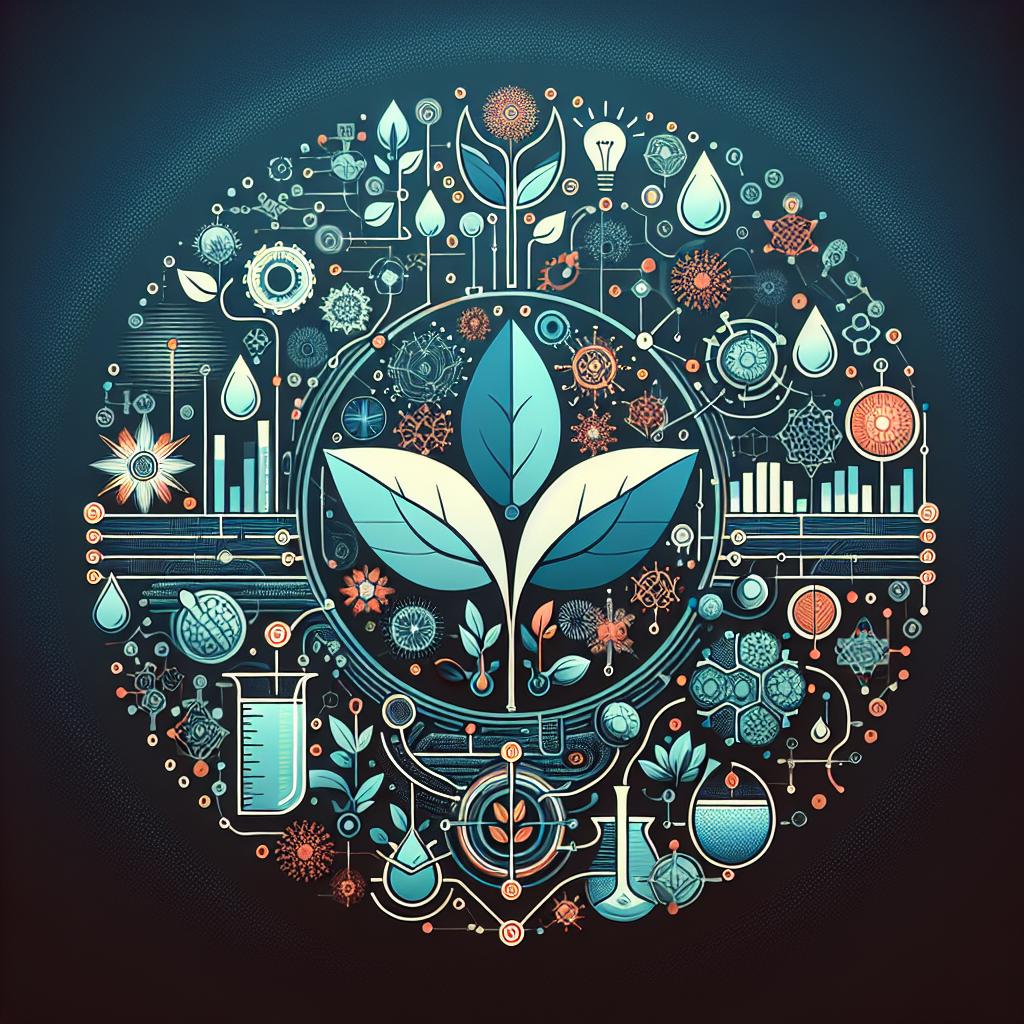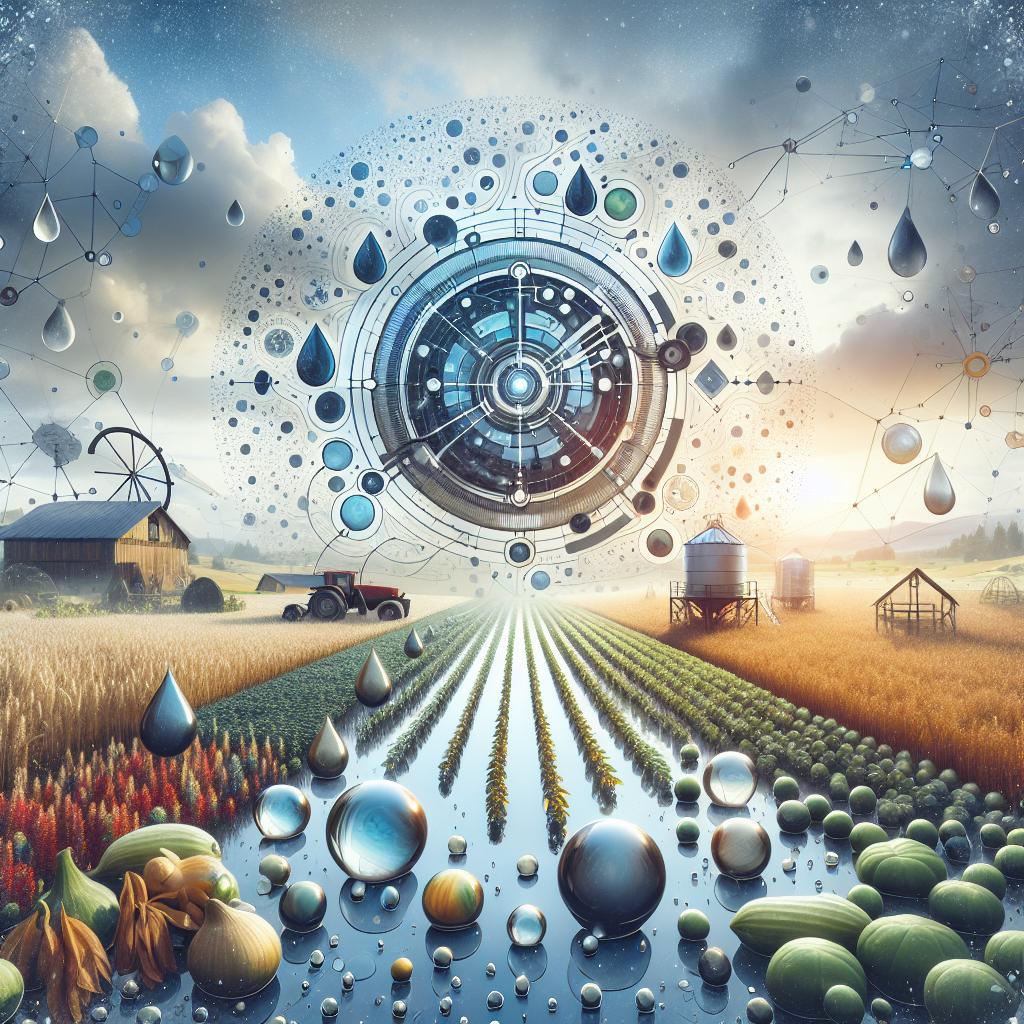This post may contain affiliate links which means I may receive a commission for purchases made through links. Learn more on my Private Policy page.
Title: Cultivating Success: Your Friendly Guide to Effective Irrigation Scheduling
Welcome to the heart of your farm, where every drop of water counts! As stewards of the land, we understand that the journey to bountiful crops begins long before the harvest. One of the key ingredients to a flourishing farm is a well-timed irrigation schedule. But with so many variables—weather patterns, crop needs, and soil health—navigating the waters of irrigation can feel like a daunting task. Fear not! This article is designed to be your trusty companion on this voyage. We’ll explore practical and easy-to-follow guidelines that will not only help optimize water usage but also enhance the vitality of your crops. Whether you’re a seasoned farmer or a fresh-faced agronomist, our friendly tips will equip you with the knowledge and confidence to implement a successful irrigation schedule tailored to your unique farming needs. So grab your watering can and let’s dive in!
Understanding Your Crops Water Needs
To effectively manage your irrigation systems, it’s essential to have a clear understanding of the water needs of your crops. Each type of crop has different water requirements that can fluctuate based on various factors such as growth stage, weather conditions, and soil type. Therefore, keeping a close eye on crop development and environmental parameters is crucial for maintaining optimal health and yield. Some key factors to consider include:
- Crop Type: Research the specific water requirements for each variety you cultivate.
- Growth Stage: Recognize that different stages (germination, vegetative, flowering) can demand varying amounts of water.
- Soil Moisture Levels: Regularly monitor your soil’s moisture to avoid both overwatering and drought stress.
Additionally, moisture loss due to evaporation and plant transpiration can significantly affect irrigation schedules. Employing tools like soil moisture sensors or weather stations can help you make informed decisions. Creating a simple irrigation schedule based on daily temperature and humidity can be beneficial. Below is a basic table outlining a sample irrigation schedule based on common weather conditions:
| Condition | Time of Day | Water Requirement |
|---|---|---|
| Sunny | Early Morning | 1 inch/week |
| Cloudy | Late Afternoon | 0.5 inch/week |
| Windy | Mid-Morning | 1.5 inch/week |
| Rainy | None | Adjust based on rainfall |

Choosing the Right Scheduling Method for Your Farm
When it comes to selecting a scheduling method for your farm’s irrigation needs, it’s essential to consider several factors that align with your goals and available resources. Choosing between atmospheric methods, soil moisture monitoring, or crop water requirements will depend on your specific crop types and environmental conditions. Each method has its unique advantages:
- Atmospheric methods: These utilize weather data to estimate daily water requirements, making them suitable for larger farms where real-time monitoring may be challenging.
- Soil moisture monitoring: By measuring moisture levels at various soil depths, these systems can provide precise information, reducing water waste and improving crop health.
- Crop water requirements: Calculating water needs based on crop growth stages and types allows for tailored irrigation schedules that enhance yields.
To help visualize the best fit for your operational style, consider using the following table that summarizes the key features of each method:
| Method | Advantages | Best Suited For |
|---|---|---|
| Atmospheric | Utilizes weather forecasts, easy to implement | Large-scale farms |
| Soil Moisture | Precise, reduces water waste | Smaller, high-value crops |
| Crop Water Requirements | Tailored to specific crops, maximizes yield | Diverse crop operations |

Harnessing Technology to Optimize Irrigation
Incorporating advanced technologies into your irrigation practices can transform the way you manage water resources on your farm. With the advent of smart irrigation systems, farmers now have access to tools that help customize watering schedules based on real-time data such as soil moisture levels, weather forecasts, and plant water requirements. By leveraging these technologies, you can ensure that each crop receives the right amount of water at the right time, ultimately leading to healthier plants and increased yields. Consider investing in:
- Soil Moisture Sensors: Measure the moisture levels in your soil to inform irrigation decisions.
- Weather Stations: Provide localized weather data to optimize watering based on expected rainfall.
- Irrigation Management Software: Develop a tailored irrigation schedule that adapts to environmental conditions.
Additionally, utilizing data analytics can help you evaluate the effectiveness of your irrigation strategies over time. By analyzing historical data, you can identify trends and make informed adjustments that support water conservation while maximizing crop productivity. A comprehensive approach may include setting up a feedback loop where information from your smart systems is regularly analyzed and compared against crop performance metrics. This iterative process not only strengthens your farming practices but also contributes to sustainable agriculture. Create a simple comparison table to track irrigation efficiency:
| Crop Type | Water Used (liters) | Yield (kg) | Irrigation Efficiency (%) |
|---|---|---|---|
| Tomatoes | 300 | 1500 | 85 |
| Wheat | 250 | 2000 | 90 |
| Corn | 400 | 3500 | 80 |

Adapting Your Strategy: Monitoring and Adjustments
Effective irrigation scheduling isn’t a set-it-and-forget-it strategy; it requires continuous monitoring and adjustments to ensure optimal results. Regularly assessing soil moisture levels, crop health, and weather forecasts will enable you to make informed decisions about your watering needs. Implementing tools such as moisture sensors, rain gauges, and satellite imagery can provide invaluable insights into how efficiently water is being used on your farm. By keeping track of these factors, you can tailor your irrigation practices to match the unique demands of your crops, promoting healthier growth and maximizing yield.
As conditions change—whether due to shifting weather patterns or the development stages of your crops—be prepared to adapt your strategy. Here are a few key considerations for timely adjustments:
- Weather Variability: Monitor forecasts for unexpected rain or drought conditions.
- Soil Conditions: Regular soil testing can reveal nutrient availability and moisture retention.
- Crop Development: Adjust watering based on the growth stage to meet hydration needs.
To help visualize your irrigation adjustments, consider creating a simple tracking table:
| Week | Soil Moisture (%) | Irrigation Amount (inches) | Weather Conditions |
|---|---|---|---|
| 1 | 25 | 1.0 | Sunny |
| 2 | 30 | 0.5 | Rainy |
| 3 | 20 | 1.5 | Dry, hot |
Your adaptability will dictate the success of your irrigation scheduling, ensuring that you utilize resources wisely while maintaining the health of your farm.
Future Outlook
As we wrap up our exploration of irrigation scheduling, let us remember that successful farming is as much an art as it is a science. By implementing thoughtful irrigation scheduling techniques, you’re not just optimizing water use; you’re nurturing your crops toward a bountiful future. Embrace the data, trust your intuition, and adapt these guidelines to suit the unique rhythms of your land.
Farming is a journey, and while the path may be winding, each drop of water you save and every plant you nurture paves the way for sustainable success. As you head back to your fields, think of your irrigation schedule as a symphony—each schedule a note, playing in harmony with the climate, soil, and the crops that thrive under your care.
So, roll up your sleeves, grab that planner, and let the orchestration of your irrigation system begin. Here’s to flourishing fields and the joy of seeing your hard work bloom! Happy farming! 🌱💧
This post may contain affiliate links which means I may receive a commission for purchases made through links. Learn more on my Private Policy page.

